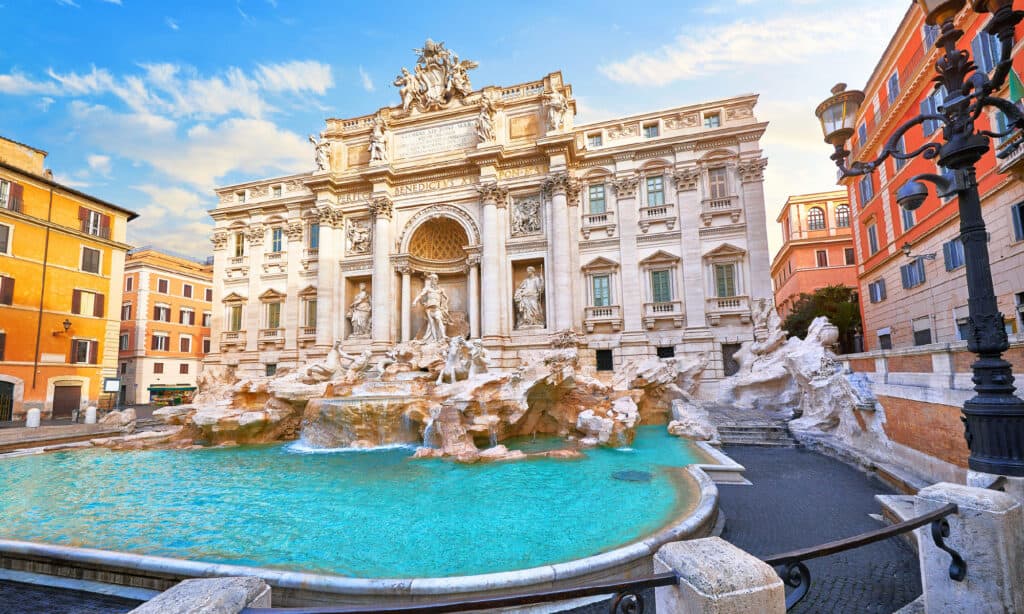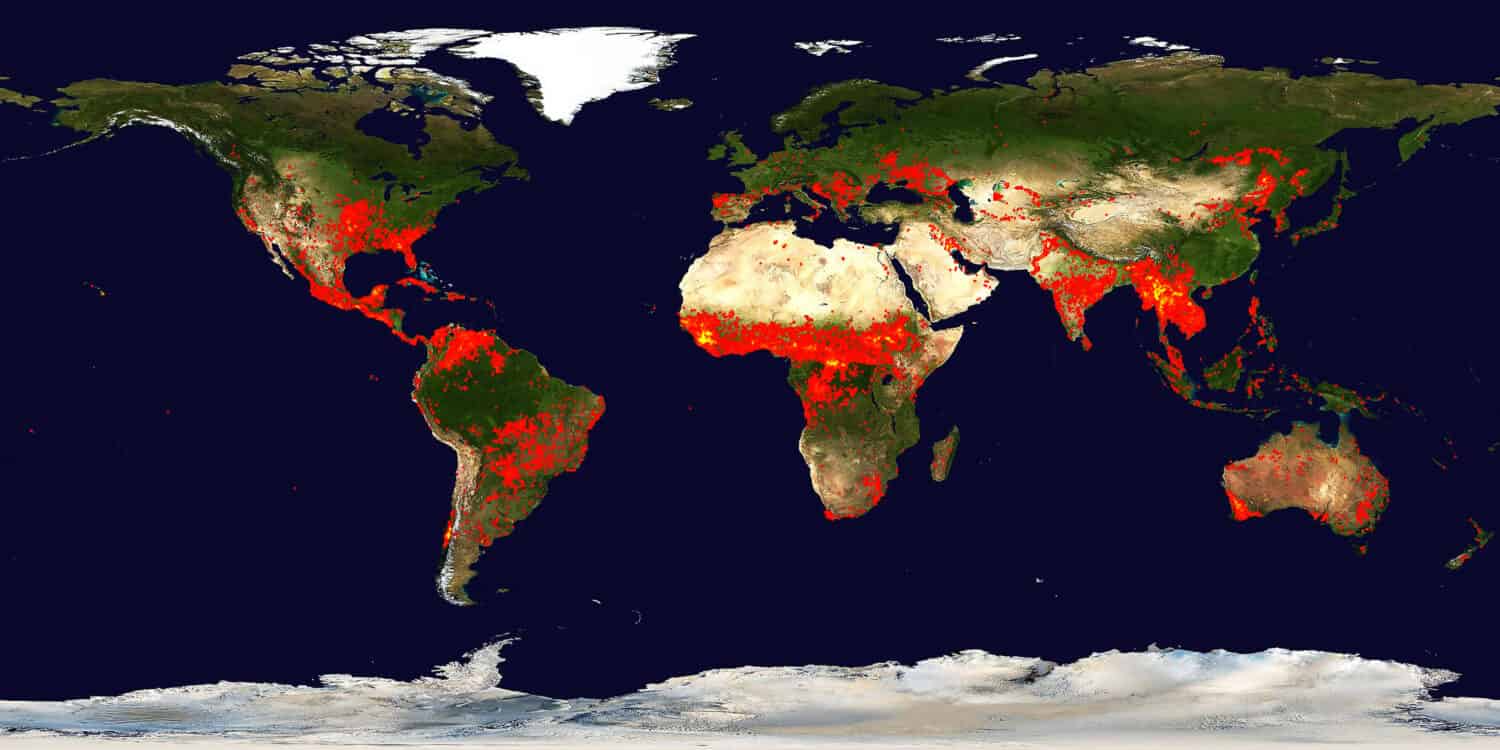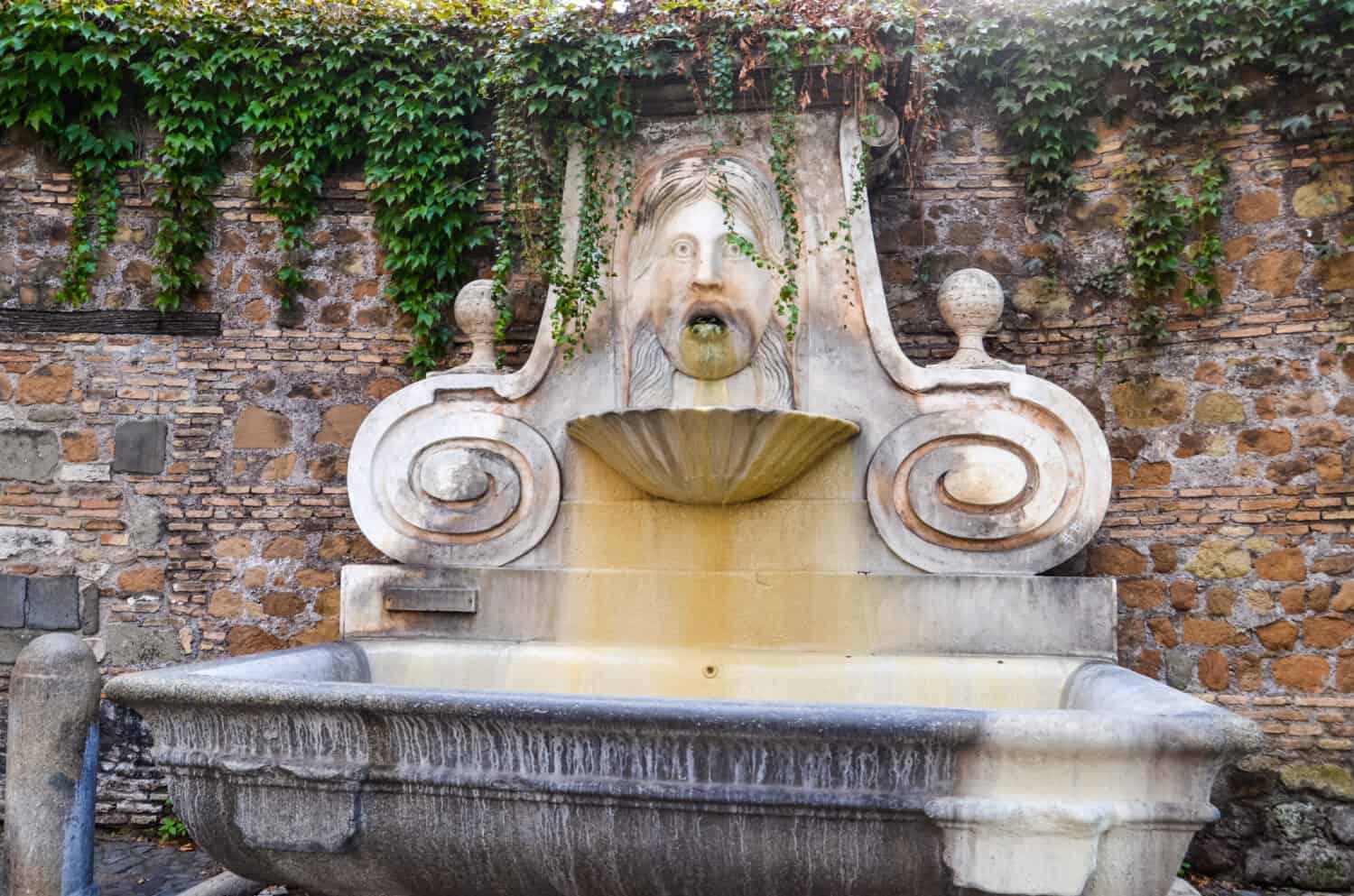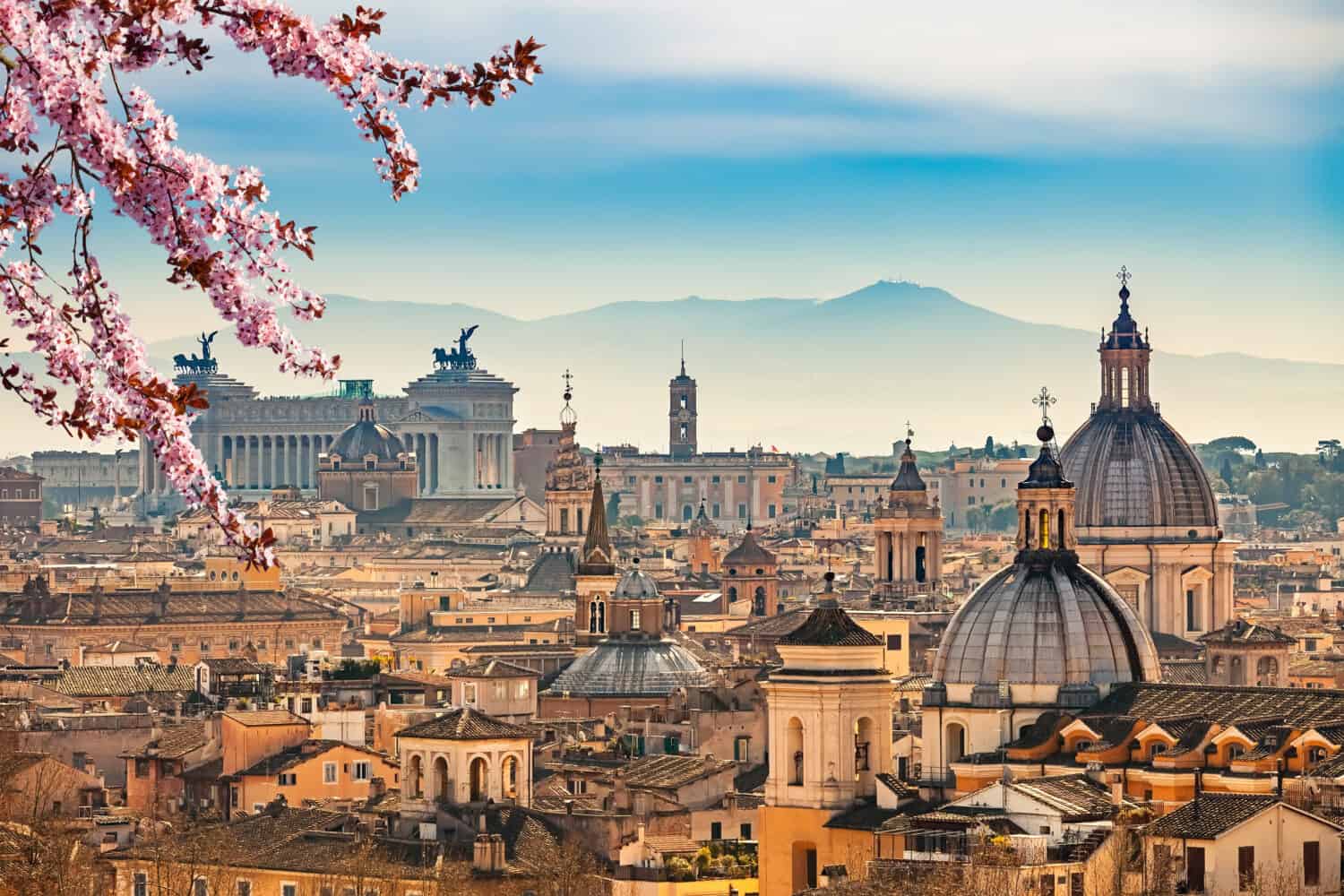Known as the Eternal City because of its rich culture and history, Rome attracts tourists all year round. Planning your journey involves not only preparing itineraries but also considering Rome’s sustainability strategies and the city’s unique climate. This article covers the specific weather patterns of Rome in August, the city’s sustainability strategies, and offers tips to navigate the city’s heat during this month.
Understanding Rome’s Unique Climate: Topography, Rainfall, and Historical Weather Events
With its seven hills, the Tiber River, and proximity to the Tyrrhenian Sea, Rome’s geography shapes its weather. Rome’s coastal areas have milder winters, thanks to the Mediterranean Sea’s moderating effect, but face increased humidity, especially during the summer months. Rainfall in Rome is low during the summer months, including August, but higher during the autumn and winter. Extreme weather events are relatively rare in Rome. Despite this, staying up to date with real-time weather data is crucial.

Rome usually sees only sporadic showers, so the lack of a roof over the Colosseum likely never proved too problematic.
©prochasson frederic/Shutterstock.com
Experiencing Rome’s in August: Long Daylight Hours and Rainfall Patterns
In Rome, August is marked by extended daylight, allowing ample time for tourists to absorb the city’s breathtaking architecture and historic landmarks. Sunrise is around 6:00 a.m. and sunset is around 8:00 p.m. Taking advantage of the daylight hours can help people stay active and enjoy the sunshine. Despite the abundant sunlight, August also brings some rainfall, averaging approximately 1.30 inches across six days, usually resulting in light, sporadic showers.
Navigating Rome’s August Heat: Understanding Temperature Fluctuations and Historical Records
August in Rome, being a summer month, stands as one of the warmest periods of the year. Temperatures typically fluctuate between 77 and 80.6 degrees Fahrenheit, occasionally soaring up to 95 degrees. Evenings, however, offer a reprieve as the temperature dips to a comfortable 64.4 to 68 degrees.
Humidity levels in Rome can vary. During the summer months, including August, it is not uncommon to have relatively high humidity levels ranging from 60 percent to 80 degrees Fahrenheit. Being the least humid month historically, August averages a relative humidity of around 53 degrees.
Rome has seen its share of extreme temperatures over the years. The highest temperature ever recorded in Rome for any month was a sweltering 107.6 degrees on July 24, 2007. August has also seen intense heat in the capital, with a record-breaking temperature of 107.4 degrees, recorded on August 7, 2017. However, because of the ongoing southern European heatwave, temperatures in Rome reached 107.24 degrees on July 18, 2023. Historically, when compared to July, temperatures in August average around 2 degrees higher.
Intensifying Heatwaves in Europe and Adaptation in Rome: Climate Change, Sustainability, and Responses amid Extreme Weather Phenomena
The escalating climate crisis in 2023 has spurred Europe into grappling with not just a heatwave, but severe climate-induced challenges. Unofficially named Cereberus (for the three-headed guard dog to the entrance of the Underworld in Greek Mythology), the intense heatwave is sweeping across Europe, affecting several countries, including Italy, Greece, and Spain. This unprecedented weather event is driving temperatures to record-breaking levels and exacerbating wildfire situations across the continent, marking the hottest July on record worldwide.
Rome, among other cities, is confronting this reality by devising strategies to mitigate these environmental challenges and adapt to the new climate norms. As mentioned, the city’s temperatures have soared past 104 degrees, sparking wildfires across Europe, notably in Greece and the Canary Island of La Palma in Spain. These drastic conditions are compelling tourists to modify their plans, with popular sites like the Acropolis in Greece temporarily closing due to the extreme heat. What all this portends for Rome in August is difficult to say.

The Trevi Fountain is often considered the most beautiful fountain in Rome.
©iStock.com/Yasonya
Extended Hot Weather and Urban Planning
In response to the heatwaves’ increasing frequency and intensity, Rome is integrating climate considerations into its urban planning strategies. Efforts are underway to mitigate the urban heat island effects and promote sustainable development. For instance, the city is now designing buildings to optimize shade and ventilation during the sweltering summer months.
The New Weather Normal and Agriculture in Rome
Climate change’s impact extends to Rome’s agricultural sector, highlighting the need for urgent adaptation measures across all sectors. The city’s resilience hinges on sustainable agricultural practices, particularly given the potential impact of the heat and urban heat islands on Mediterranean crops like olives, grapes, and citrus fruits that thrive in Rome’s climate.
Beyond the immediate heatwave crisis, Rome continues to address challenges like resource depletion and pollution, typical of industrialized cities. These environmental issues, impacting land, air, and water quality, form an integral part of Rome’s sustainability strategy as the world grapples with the mounting impacts of climate change.

One prominent consequence associated with climate change is the widespread escalation of wildfires.
©Zenobillis/Shutterstock.com
Wildfires Are a Global Challenge
Firefighting teams from countries like Poland, Romania, and Slovakia have rallied to tackle the wildfires, illustrating the global nature of the climate crisis and the escalating intensity of heatwaves. These developments underscore the urgent need for global action and leadership to mitigate climate change effects.
This may especially affect to travelers to Rome in August, as the smoke from such wildfires can greatly reduce the air quality.
Extreme Weather and Tourism in Rome in August
Rome’s tourism industry plays a pivotal role in these times, advocating for and integrating sustainable practices amid environmental challenges. Protecting its rich cultural heritage and promoting a sustainable future has become even more crucial as the city adapts to climate change. Given that Rome’s hot, sunny weather is a tourist magnet, balancing tourism demands, and the city’s environmental needs is a pressing concern.
The urgency to decrease global emissions is underscored by the prospect of the average global temperature surpassing a crucial limit of 34.7 degrees Fahrenheit above pre-industrial levels, as defined by the Paris Accords (commonly known as the 1.5 degrees Celsius target).
Rome and other cities are at the vanguard of implementing sustainability measures and adaptive strategies, setting examples of resilience and sustainable growth. The current crisis reinforces the need for robust responses to climate change as Rome continues to adapt, innovate, and prioritize sustainability amidst an evolving climate landscape.
Recommendations for Navigating Rome’s August Heat
With the ongoing heatwave causing temperatures to soar past 104 degrees Fahrenheit across Southern Europe, including Italy, it’s important to adapt your plans accordingly. Due to the severity of the heatwave and potential health risks, the Italian Health Ministry has issued a red alert heat warning in ten cities to include Rome.
Tourists are advised to plan outdoor activities for the early morning or late evening when temperatures are lower. During the peak daylight hours when the sun is at its strongest, consider exploring Rome’s many indoor attractions such as museums or art galleries. Staying in air-conditioned spaces is strongly recommended during these peak hours. Hydration is crucial in this intense heat, so always carry a water bottle with you, preferably a reusable one. Many of Rome’s public squares have nasoni, or drinking water fountains, where you can refill your bottle for free.

Rome has nearly 3,000 free drinking fountains, known as
nasoni(literally, “big nose”).
©Greentellect Studio/Shutterstock.com
Braving the Roman Summers: A Guide to Surviving the New Normal, August Edition
When the summer heat blankets Rome in August, it isn’t just the terracotta rooftops that bake in the sun. Visitors and locals alike must grapple with escalating temperatures, a sizzling symptom of our warming planet. As noted above, the Italian Health Ministry has been proactive, hoisting a red alert in Rome and other cities to mark these extreme heatwaves.
While we may not have the precise play-by-play for August 2023, we can predict the public health measures authorities typically deploy. These include transforming public spaces into cooling oases and issuing timely reminders to guzzle fluids aplenty and seek solace in shaded or air-conditioned nooks. They underscore the importance of vigilance, particularly for those who are most vulnerable — the elderly and those with chronic health conditions.
Some tips to reduce the impact of intense heat on your own:
1. Stay Hydrated
Sip on water constantly and keep a refillable bottle handy. Rome’s ubiquitous drinking fountains, known as nasoni, are your allies.
2. Dress Smart, and in More Ways Than One
Opt for breathable, lightweight clothing. A wide-brimmed hat and sunglasses will shield you from the relentless sun.
3. Sunscreen is Your Friend
Protect your skin from harmful UV rays with a broad-spectrum sunscreen of at least SPF 30. Reapply frequently, especially after swimming or sweating.
4. Find Shade and Cool Interiors During Peak Sunlight
The sun’s intensity peaks between 10 a.m. and 4 p.m. Seek shelter in museums, art galleries, or enjoy a traditional Italian siesta.
5. Plan Outdoor Activities Wisely
Early morning and late afternoon are cooler for Rome in August. Time your visits to outdoor sites like the Colosseum, Roman Forum, and Palatine Hill accordingly.
6. Embrace Public Transportation
Minimize exposure to the sun by utilizing Rome’s air-conditioned buses, trams, and metro.
7. Keep an Eye on the Forecast and Heed Local Advice
Local authorities provide timely guidance during extreme weather conditions. Stay informed and follow their advice.
8. Know Your Enemy, Heat-Related Illnesses
Arm yourself with the knowledge of the symptoms of heat exhaustion and heat stroke, such as dizziness, rapid pulse, and severe headaches. Seek immediate medical attention if you experience these symptoms.
9. Eat Light, Eat Right
Opt for refreshing salads, fruits, and yogurt. They’re not just delicious but also easy on your system. Greasy food and excessive alcohol can lead to dehydration.
10. Respect Rome
Be a conscious traveler. Dispose of waste properly, honor the city’s historical sites (especially when it comes to carving your name into ancient walls), and conserve water when possible.
On Heatwaves
Heatwaves aren’t just about uncomfortable temperatures. They’re insidious, lurking with potentially fatal conditions like heat exhaustion and heatstroke. Knowledge is your armor against the heat. Learn to identify symptoms such as heavy perspiration, unexplained fatigue, a fast or weak pulse, nausea, fainting, and skin that’s either unusually pale or clammy. If these signs emerge, don’t hesitate to seek immediate medical attention.
Global warming is making these heatwaves more frequent, and the World Meteorological Organization (WMO) paints a sobering picture: deaths from extreme weather, especially high nocturnal temperatures, are on the rise. Therefore, it’s crucial to stay attuned to weather forecasts and adjust your plans accordingly.
Individual efforts matter, too. We can all contribute by keeping our power consumption in check during peak hours to stave off power outages triggered by increased demand for air conditioning. The small steps we take can have a significant impact on managing these increasingly severe weather patterns.
Braving a Roman heatwave doesn’t have to feel like a Herculean task. With proper preparation and mindful practices, you can revel in the city’s wonders while prioritizing your well-being.
Conclusion
August in Rome presents a vibrant mix of cultural richness and sizzling weather. Given the increasing severity of heatwaves due to climate change, preparedness becomes paramount. As visitors, we must marry our travel plans with the city’s sustainability efforts, adapting to the changing climate realities. Armed with these tips and conscious choices, you can enjoy Rome’s allure while playing your part in the city’s sustainability aspirations.
Thank you for reading! Have some feedback for us? Contact the AZ Animals editorial team.








